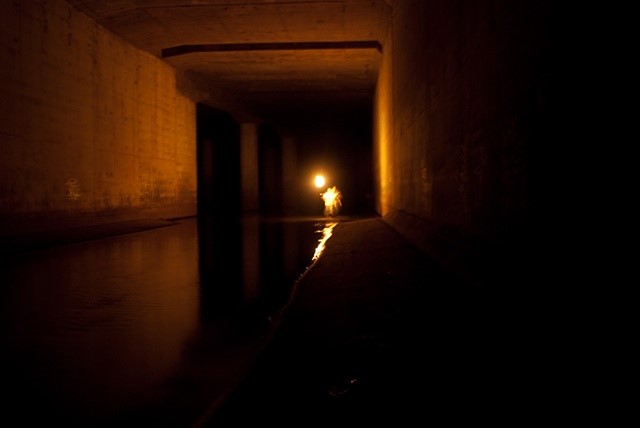
What begins as undifferentiated space becomes place as we get to know it better and endow it with value. … Furthermore, if we think of space as that which allows movement, then place is pause; each pause in movement makes it possible for location to be transformed into place. … Home is an intimate place.”
~Yi Fu Tuan, Space and Place
••• WHAT IS “THE INVISIBLE CITY PROJECT”?
The Invisible City Project is a platform for celebrating Greater Hartford’s distinct characteristics as expressed through the art of dance and performance. There are so many people doing so many interesting things in and around the city. Unfortunately, so much of it is overlooked by most, as if an invisible city runs parallel to commonly held perceptions of the place. It is reminiscent of the Park River (or Hog River) which once flowed through the city center, shaping city life along its path, but was buried in the 1940s to keep devastating floods at bay. Replaced by a network of roads and highways, the now subterranean river continues to flow beneath the surface, providing an apt metaphor for the city’s seemingly latent vibrancy. Though few are aware of this compelling aspect of Hartford’s history, interest in the river is being renewed daily as artists, environmentalists, adventure seekers, and historians find ways to make the unseen visible. Perhaps now is also the time to renew interest in our other buried treasures, working together to unearth the dynamic, culturally rich Hartford that exists right beneath the surface. The Invisible City Project sets out to shed light on this Hartford that is often invisible to the naked eye, but inevitably seep into and through the work of its artists.
This is a research project of sorts, one where you are all invited to serve as ethnographers. This research is rooted in the process of making art, witnessing that art, and engaging in dialogue around it and the artists who make it. And perhaps this investigation is driven by questions such as …
- What is Hartford-ness and how do we experience Hartford-ness through our art, particularly the performance work being made here now?
- Are there artists whose work still reflect Hartford-ness in someway, despite the fact that they once lived and worked in the Hartford area, but are now living and making dances elsewhere ?
- Might we learn something about ourselves by engaging with these works, and each other?
- What if the city you lived in was personified as an artist and how might your growing awareness of the common elements unifying its diverse body of work, shift your sense of place?
••• HOW WILL “THE INVISIBLE CITY PROJECT” UNFOLD?
- The Invisible City Project site: the website/blogsite is intended to serve as a virtual commons, providing artists and audiences the opportunity to dialogue about the artists making work in the area right now, and placing that work in their appropriate social and historical contexts. Words and images–in the form of interviews, essays and videos–will be primary vehicles for documenting and sharing this investigation. It is also our hope that this site will serve as a point of entry for anyone seeking information about, and connection to, the dance in the area.
- Annual Town Hall Gathering: It is a rare opportunity for people from across the dance eco-system to gather in one room with food, drink, good conversation … and with no agenda other than to connect around our shared commitment to the art of dance in our region. After a truly refreshing gathering of the dance community at The Garden Center in September 2012, we hope to come together in this way again and again.
- Monthly Works-in-Progress Showings: In an effort to nurture creative process and supporting dance makers in developing the best work, monthly Works in Progress Showings will give local and regional dance makers the opportunity to share developing works, give and receive facilitated feedback, and deepen bonds with colleagues.
- Annual Performance Salon Festival: Produced in partnership with Open Studio Hartford, a city-wide event which annually invites hundreds of local visual artists and craftspeople to open their studio doors to the public over the course of one fall weekend, this Performance Salon Fest will feature 6 performance salons at The Garden Center for Contemporary Dance by area dance makers. Performance Salons are decidedly intimate, seating 20-30 guests, and will include the performance, a concluding conversation, and time to enjoy light refreshments.
- Featured Artists: While the project is designed to serve a wide range of dance makers and the audience who love them, from time to time featured artists will give us the opportunity to hone in on a particular artist, project or methodology. These artists may come to us through performances in The Garden Center, in other venues, as part of shared events or through virtual means on this website.
••• WHY DOES THIS PLACE AND THIS MOVEMENT MATTER?
Because our identities are inevitably wrapped up in our sense of place, and we should take stock of our own (places and identities).
Because our sense of place is experienced in the body, movement is an apt way to express that sense.
Because every city has certain invisibilities that are worth unearthing, claiming and celebrating.
Because we might learn something about ourselves, individually and collectively, by taking stock of our city’s history, diverse populations, economic disparities, geographic proximity to established cultural centers–not to mention its tendency toward between risk aversion in contrast to its legacy of innovation–all in relationship to the city’s cultural expression?




